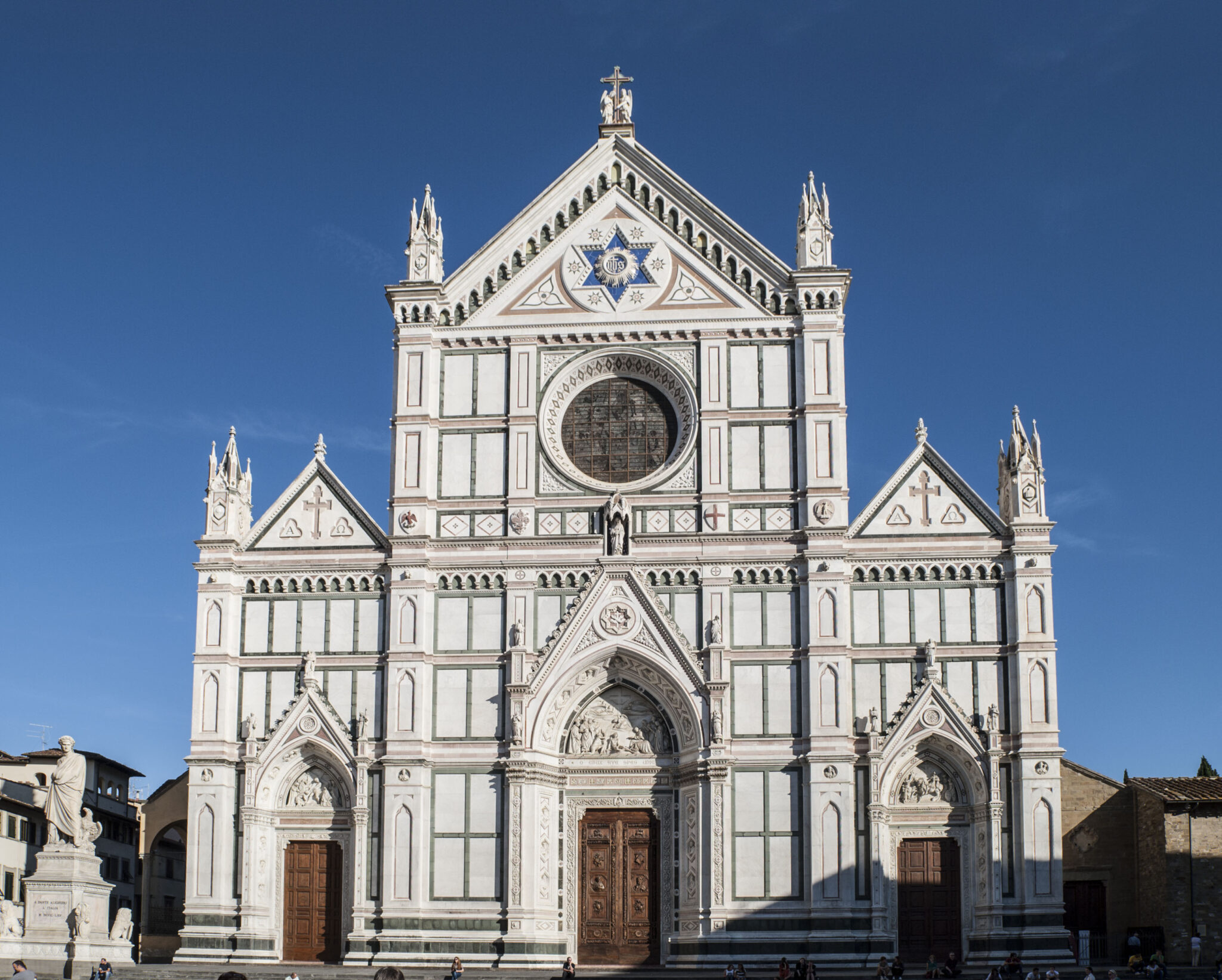Basilica of Santa Croce – Florence
The first mention of a primitive church of Santa Croce in Florence dates back to 1228, two years after the canonization of Saint Francis; his followers, probably when he was still alive, had in fact chosen to settle in a village, outside the walls of the city and subject to floods of the river Arno, populated by humble artisans.
In 1294-95, in an attempt to accommodate an increasing number of pilgrims, it was decided to build a monumental building corresponding to the present church, whose architect was Arnolfo di Cambio. During the sixteenth century, Cosimo I decided to make some changes in line with the precepts dictated by the Council of Trent, therefore his trusted architect, Giorgio Vasari demolished the cleristory and, instead of the chapels, had new altars erected, covering the medieval frescoes.
Santa Croce is also known for being the church of the famous burials: in addition to the Franciscans and noble families, the artist Michelangelo Buonarroti, the scientist Galileo Galilei, the literati Leonardo Bruni and Vittorio Alfieri, and many others find eternal rest here.
The main chapel, as well as the adjacent ones, preserve frescoes of the Giotto school, depicting Franciscan stories and the story of the True Cross, to which the place of worship is dedicated. In addition to the building, the convent, the cloisters and the Pazzi Chapel are still on site.











